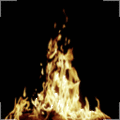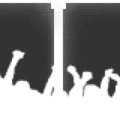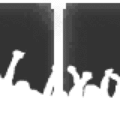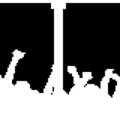Difference between revisions of "Transparency"
m |
EricChadwick (Talk | contribs) |
||
| (2 intermediate revisions by one other user not shown) | |||
| Line 1: | Line 1: | ||
= Additive Transparency = | = Additive Transparency = | ||
| + | The flames on this burning bed are using additive [[Transparency_map|transparency]] to keep the colors "hot." | ||
| + | <gallery mode="traditional"> | ||
| + | Image:Transparency.gif|in-engine | ||
| + | Image:flames.gif|map | ||
| + | </gallery> | ||
| − | [[ | + | See [[additive color model]]. |
| − | |||
| − | |||
| − | |||
= Alpha Transparency = | = Alpha Transparency = | ||
| + | <gallery mode="traditional"> | ||
| + | Image:crowd.gif|A texture using alpha [[Transparency_map|transparency]] in RT3D. | ||
| + | Image:crowd_rgb.gif|The RGB part of the texture file. | ||
| + | alpha.gif|The alpha channel of the texture file, in 8bit (256 colors). | ||
| + | </gallery> | ||
= Alpha Bit Depths = | = Alpha Bit Depths = | ||
| + | <gallery mode="traditional"> | ||
| + | alpha_8bit.gif|A closeup of the 8bit (256 colors) alpha channel. This is the highest bit depth used for alpha channels, because you can get a full range of grays with 256 colors. If we had a higher bit depth like 16bit (65535 colors), you would see the alpha looking a little bit smoother, but because texture filtering is so common now, it ends up softening your 8bit alpha anyway, and it looks fine. | ||
| + | alpha_4bit.gif|A closeup of a 4bit (16 colors) version of the alpha channel. Still a lot of detail, but starting to break up some around the edges. This is a much smaller file than the 8bit alpha, which is good because it takes up much less memory. A good trade off. | ||
| + | alpha_1bit.gif|A closeup of a 1bit (2 colors) version of the alpha channel. 1bit means only black and white, so there's no anti-aliasing. This is a very small file-- the visual quality suffers, but it saves a lot of memory. Not worth the degradation unless you really need the memory. | ||
| + | </gallery> | ||
= Subtractive Transparency = | = Subtractive Transparency = | ||
| − | + | <gallery mode="traditional"> | |
| + | subtractiveT.gif|In Engine | ||
| + | xray_hand.gif|Map | ||
| + | </gallery> | ||
| − | The x-rays on this light-table use subtractive transparency to make things under them darker, the way real x-rays do. The subtractive method isn't used all that often, so if you need it you should ask your programmer(s) if they can add it as a specific feature of the engine. | + | The x-rays on this light-table use subtractive [[Transparency_map|transparency]] to make things under them darker, the way real x-rays do. The subtractive method isn't used all that often, so if you need it you should ask your programmer(s) if they can add it as a specific feature of the engine. |
| − | See [[ | + | See [[Subtractive Color Model]]. |
---- | ---- | ||
[[Category:Glossary]] | [[Category:Glossary]] | ||
Latest revision as of 21:42, 11 December 2014
Additive Transparency
The flames on this burning bed are using additive transparency to keep the colors "hot."
See additive color model.
Alpha Transparency
A texture using alpha transparency in RT3D.
Alpha Bit Depths
A closeup of the 8bit (256 colors) alpha channel. This is the highest bit depth used for alpha channels, because you can get a full range of grays with 256 colors. If we had a higher bit depth like 16bit (65535 colors), you would see the alpha looking a little bit smoother, but because texture filtering is so common now, it ends up softening your 8bit alpha anyway, and it looks fine.
Subtractive Transparency
The x-rays on this light-table use subtractive transparency to make things under them darker, the way real x-rays do. The subtractive method isn't used all that often, so if you need it you should ask your programmer(s) if they can add it as a specific feature of the engine.








